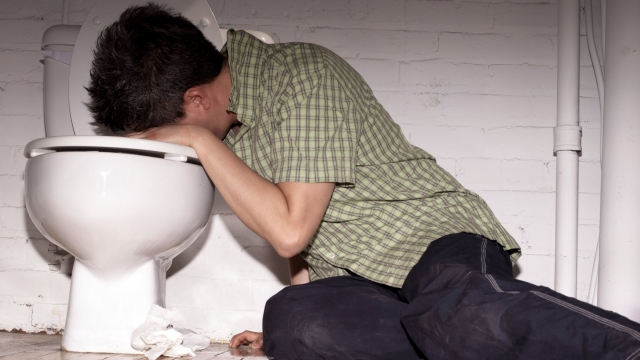
Here’s why it’s a terrible idea to let a drunk person ‘sleep it off’
http://ift.tt/2xGxkFQ
Getty Images
In September, 18-year-old Louisiana State University freshman Maxwell Gruver died after fraternity brothers invited the pledge to a late-night "bible study" at their fraternity house. Gruver died with a blood alcohol level of .495 in his system, The Washington Post reports. That’s more than 6 times the legal limit in most states.
Gruver passed out around midnight at the frat house, but two of his fellow students waited until the morning to take him to the hospital where he was pronounced dead, according to the New York Times.
One of the challenges of combatting deadly drinking is that many people don’t realize that letting a severely drunk person sleep can be dangerous. The University of Virginia cautions its students to "never leave an intoxicated person alone to ‘sleep it off.’" Blood alcohol content can continue to rise after a person stops drinking, and the person can choke, slip into a coma, stop breathing or die.
Alcohol poisoning can also prompt seizures and cause long-term brain damage. Home "remedies" like napping, taking a cold shower, eating food or drinking coffee won’t help drinkers recover more quickly, either.
Blood alcohol concentration (BAC) measures the proportion of drops of alcohol to drops of blood in a person’s body. (A BAC of .1 indicates a drinker has 1 drop of alcohol per 1,000 drops of blood in their system.) All US states consider a person unfit to drive at .08, while more serious concerns like vomiting, blackouts and loss of consciousness set in around .16 to .3, according to the National Institutes of Health.
Most people probably don’t have a breathalyzer laying around in order to get an accurate BAC measurement when they need it most.
Still, there are a few simple ways to spot when someone’s blood alcohol level has entered the dangerous territory of alcohol poisoning.
UVA has developed the acronym ‘PUBS’ to help its students remember the signs someone may be dangerously drunk. Call 911 right away if someone is:
- Puking while passed out
- Unresponsive to stimulation (pinch or shaking)
- Breathing (slow, shallow or no breathing)
- Skin (blue, cold or clammy)
If a drunk person is asleep and breathing normally, something called the ‘Bacchus’ move is a way to help them stay safe and keep their airway clear. Using their own left arm as a pillow, roll the person onto their left side and drop their right knee forward to help stabilize them. Check often to make sure they’re breathing normally and regularly. The Mayo Clinic suggests a gap of more than 10 seconds between breaths is a sign of alcohol poisoning.
Don’t be afraid to call 911 sooner rather than later. At least 32 states and Washington DC have medical amnesty laws on the books which give limited legal immunity to people who call for help.
Chris Holstege, co-medical director of UVA’s Blue Ridge Poison Center says there’s often a misconception that the hospital is going to tell someone what happened if a student comes in, but he stresses that patient privacy laws are robust.
“By law, hospitals must protect the privacy of all patients and are not allowed to report back to a school about any student’s visit to the emergency room or any other healthcare service,” Holstege said.
NOW WATCH: Drinking too much alcohol can make you dizzy — here’s the science behind it
See Also:
- I’ve been on antidepressants for a decade — here’s the biggest misconception about them
- A Stanford researcher is pioneering a dramatic shift in how we treat depression — and you can try her new tool right now
- A disturbing plague outbreak is devastating Madagascar
SEE ALSO: Scientists are calling the way Americans drink ‘a public health crisis’
business
via Business Insider http://ift.tt/eKERsB
